Pan de muerto, recipe for authentic Mexican sweet bread of the dead

The (Pan de muerto) bread of the dead is an especially typical Mexican sweet around the Day of the Dead. The shape of this sweet bread represents the body, with the skull and bones of the deceased. But regardless of its characteristic shape, the tradition and beliefs that surround it, we can say that it is a delicious brioche dough bun that is easy to make.
The flavor of orange and orange blossom is what makes this bread different and characteristic, as well as its classic final glaze with butter and sugar. If you still do not know it and have never done it, I recommend that you try it, because you will repeat for sure.
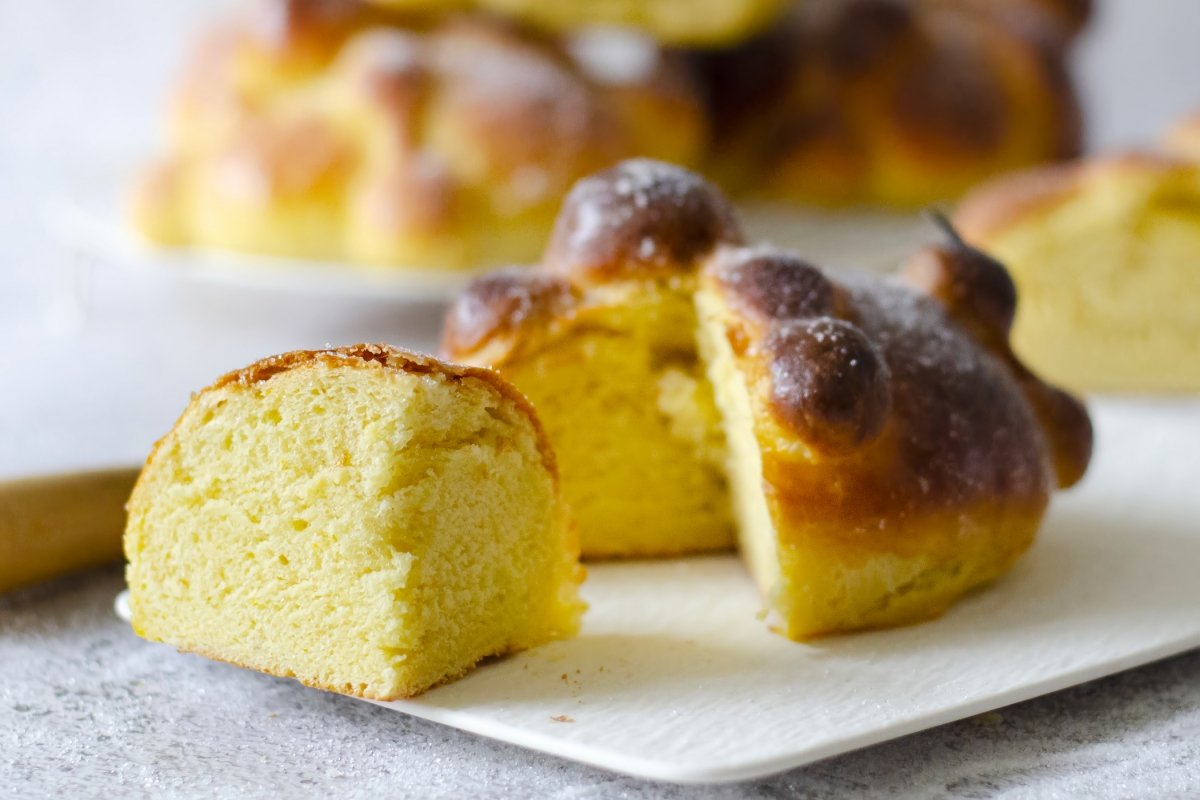
recipe information
-
- Preparation time: 50 minutes
-
- cooking time: 20 minutes
-
- total time: 1 hour and 10 minutes (plus about 4 hours of rest)
-
- rations: 6 units
-
- Category: dessert
-
- type of cuisine: mexican
-
- Calories per serving (kcal): 806 calories
Pan de muerto ingredients for 6 loaves
For the ferment:
-
- 50ml milk
-
- 5 g dry baker’s yeast
-
- 50 g of flour of force
For the final dough:
-
- 600 g of flour
-
- 200 ml of milk
-
- 5 eggs
-
- 100g of sugar
-
- 1 teaspoon salt
-
- Peel of an orange
-
- 5 ml of orange blossom water
-
- All the previous ferment
-
- 150 g butter at room temperature
-
- 1 tablespoon of oil
-
- 1 beaten egg
For the glaze:
-
- 20 g melted butter
-
- 25g of sugar
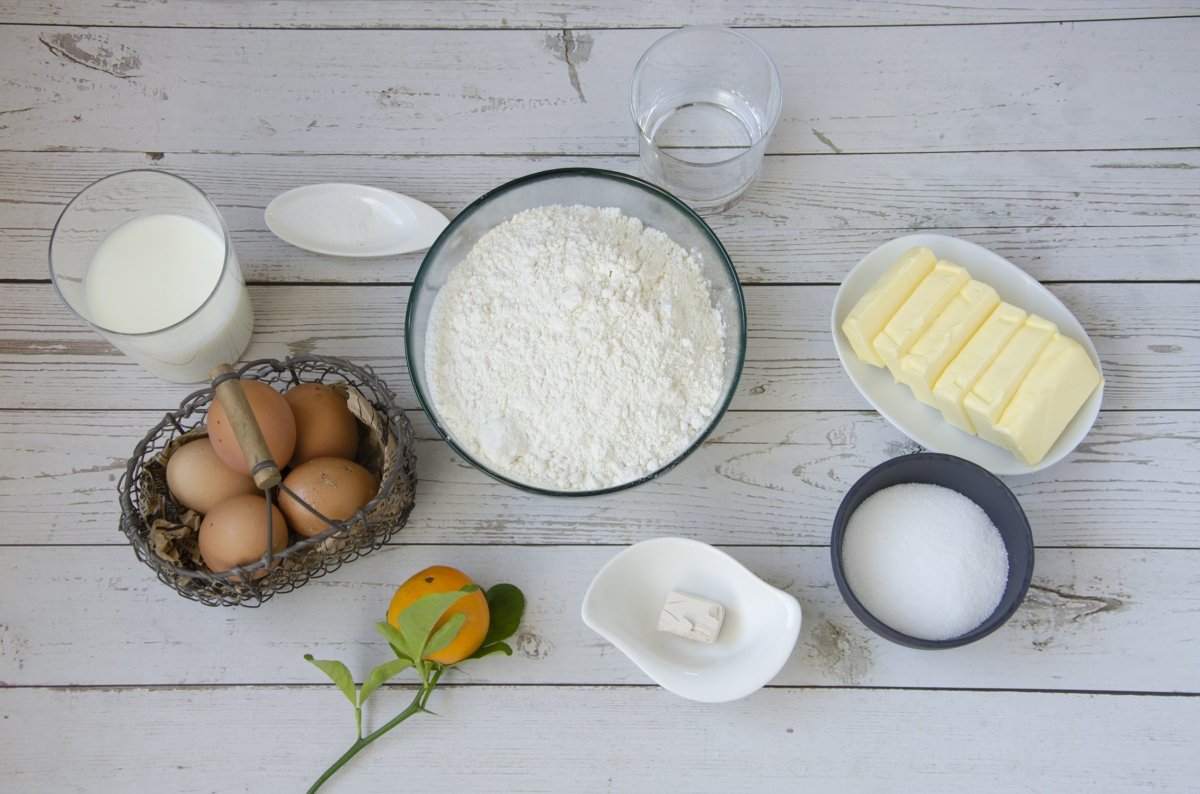
How to make bread of the dead
We start by preparing the ferment. To do this, we put 50 ml of milk in a bowl and add 5 g of dry yeast. We let it rest for 5 minutes so that the yeast hydrates and we add 50 g of flour. We mix everything and when the dough is integrated, we let it rest covered for a couple of hours, until it doubles in size and is bubbly. In turn, we remove the eggs and butter from the fridge so that they are tempered when we make the final dough.
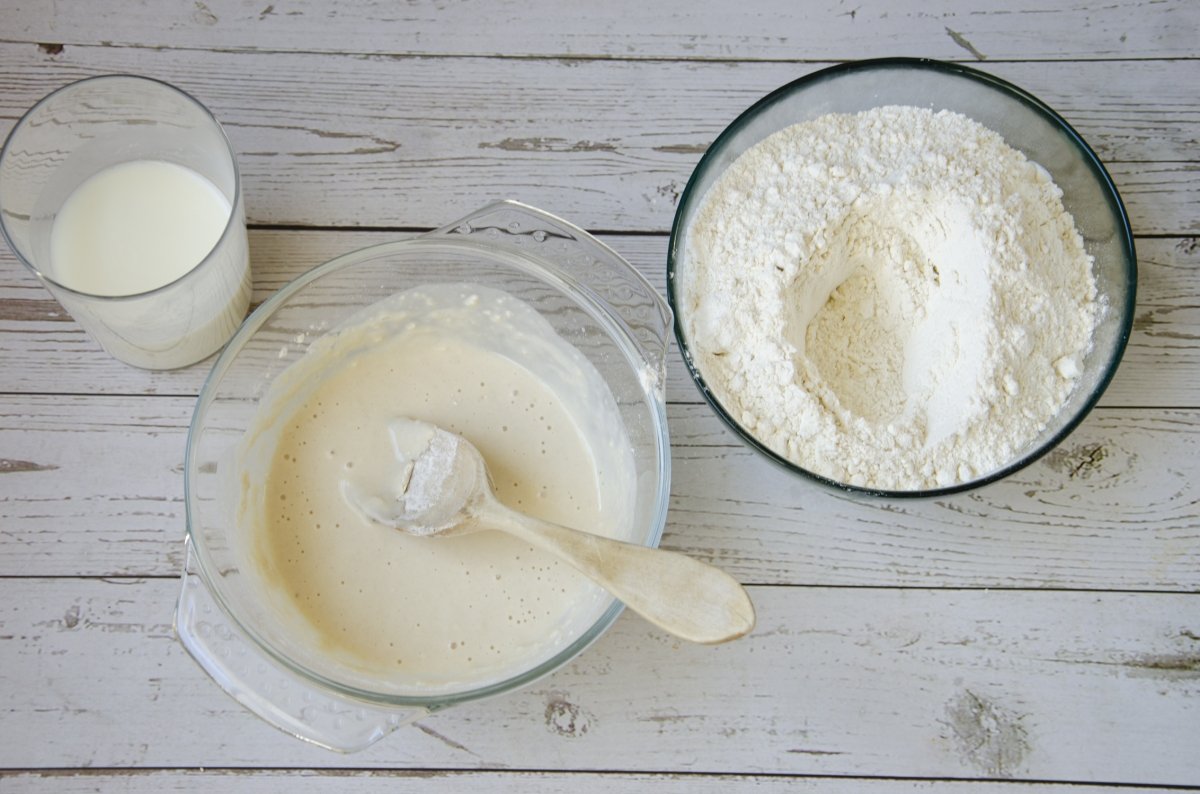
When the ferment is ready and has doubled in volume, we begin to prepare the dough. To do this, we put the 600 g of flour in a bowl, make a hole in the center and add the rest of the ingredients, except the butter: 200 ml of milk, 5 eggs, 100 g of sugar, 1 teaspoon of salt, the zest of an orange, 5 ml of orange blossom water and the previous ferment.

We knead everything with our hands or we can also do it using a mixer, which is always a great help for this type of open dough.
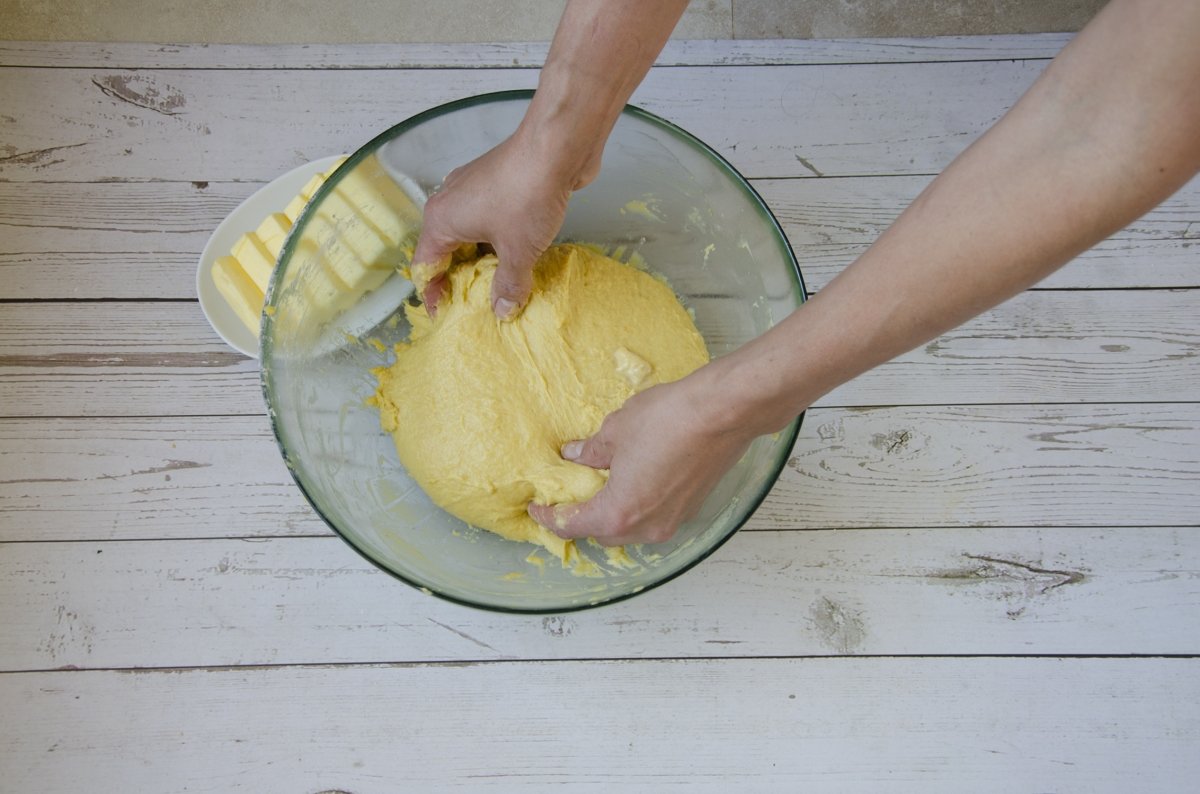
When the dough is smooth and the ingredients are integrated, add the 150 g of butter cut into cubes.
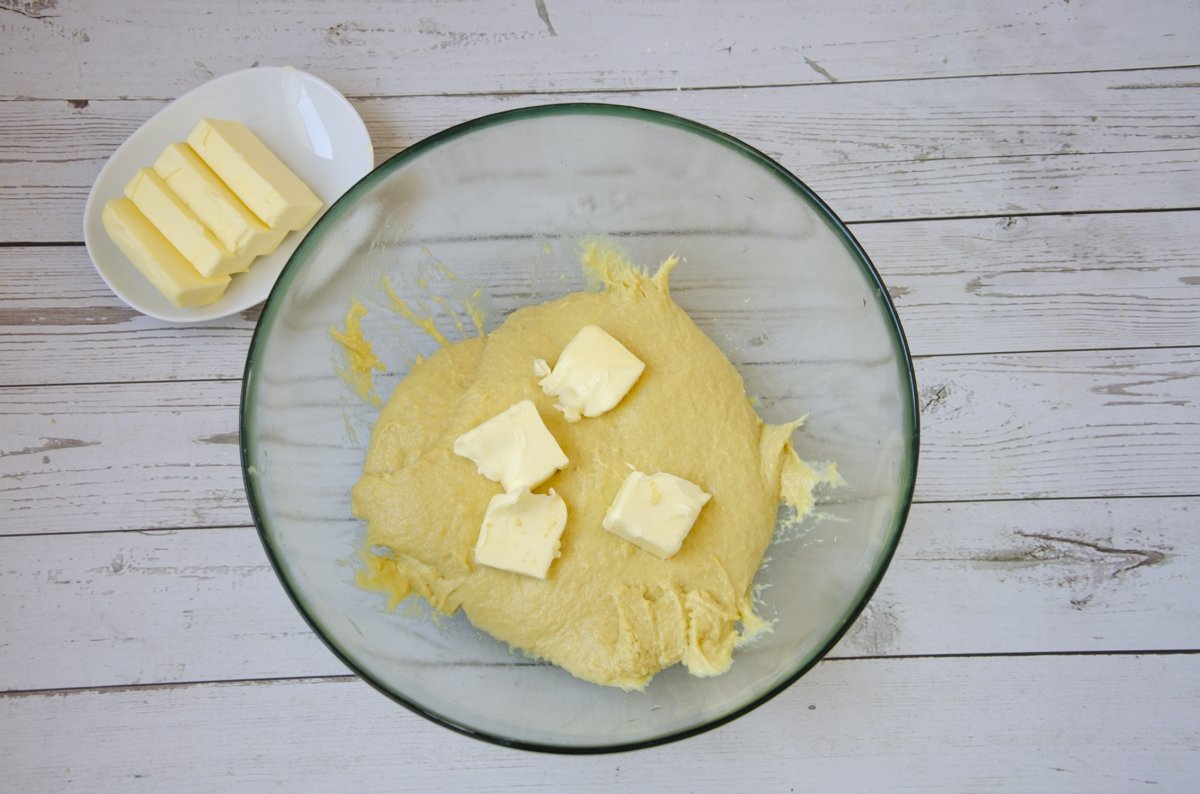
We knead everything again until the butter is integrated with the dough and we once again have an elastic dough that comes off the hands. Put it back in a greased bowl, cover it and let it rise at room temperature until it doubles in size, which will take about 2 hours. However, the rising times of the masses are indicative, since they depend on the temperature and humidity in the environment of each kitchen. We can also delay the fermentation and store the dough in the fridge until the next day.
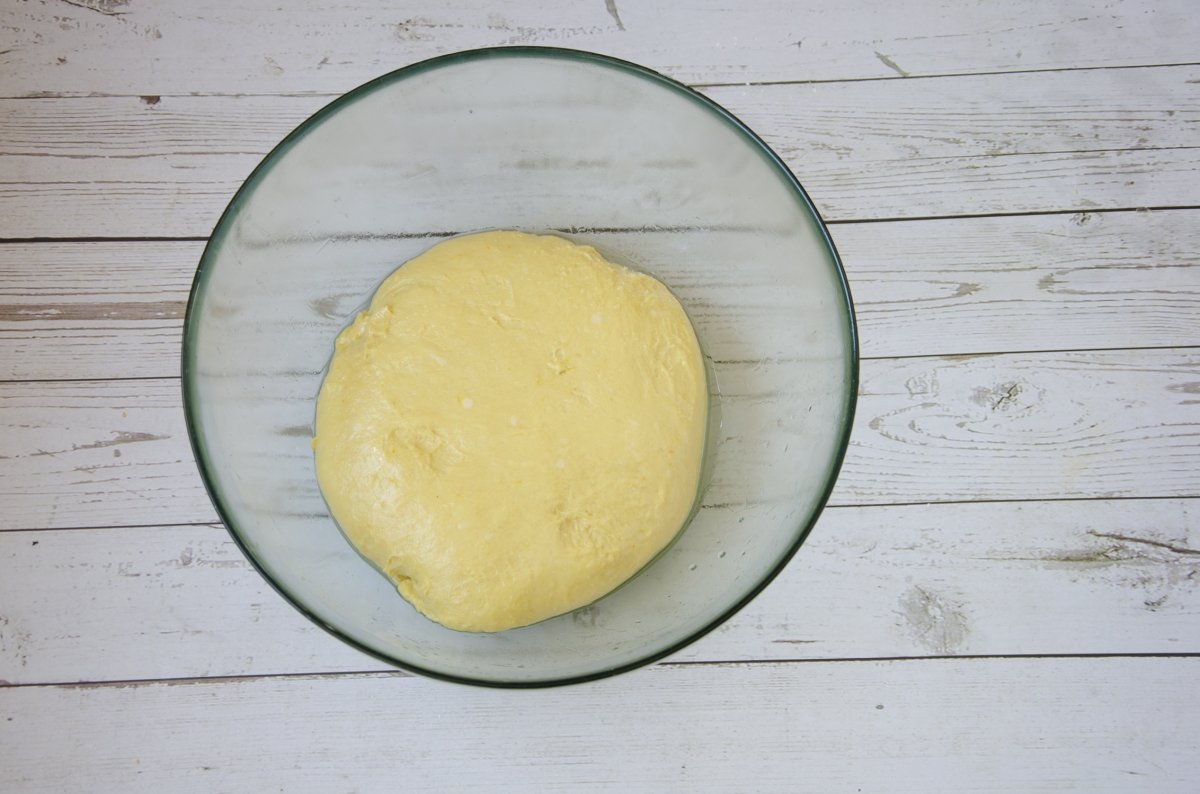
After 2 hours, the dough will have doubled its volume and we can form the loaves. If we have kept it in the fridge, the rise will be slower, but the next day, it will have doubled its volume just the same. In this case, we take it out of the fridge, let it warm for an hour and form the loaves.
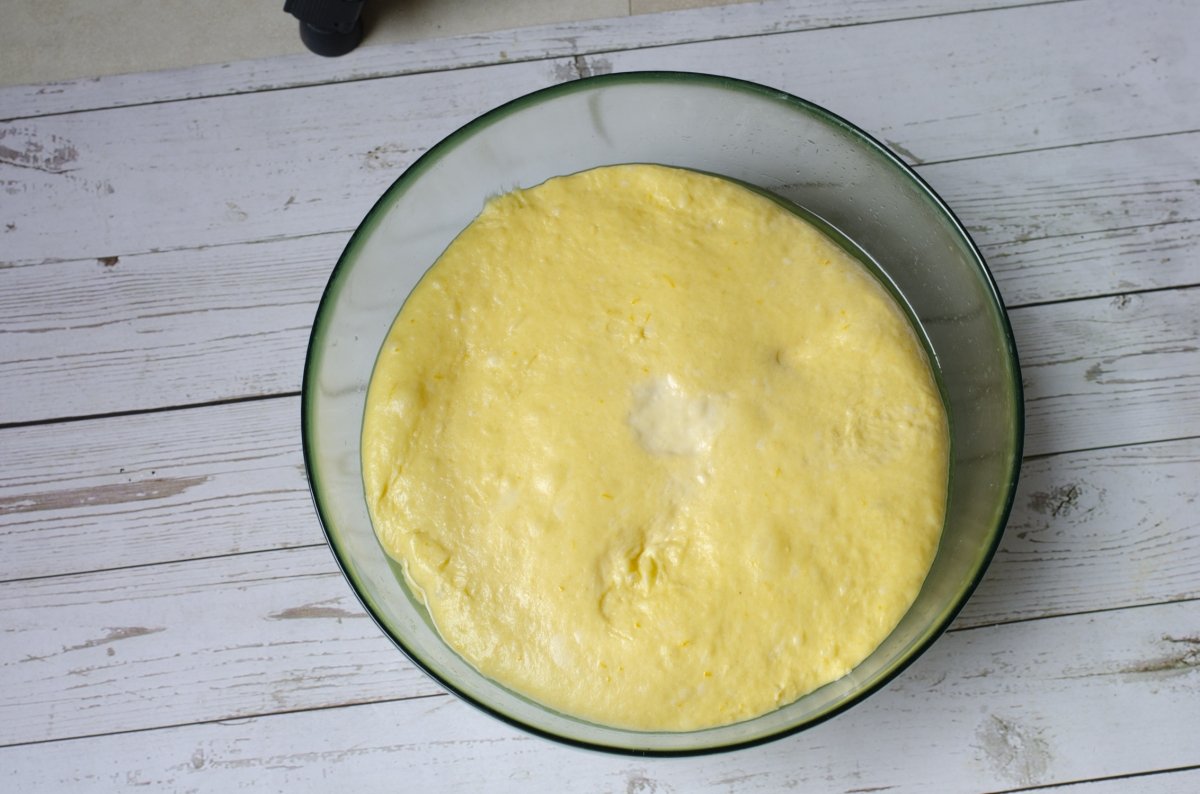
First we divide the dough into 7 portions of about 200 g each and roll 6 of them with tension, which will be our buns or pan de muerto. We divide the other portion of dough into 12 equal parts, 6 of them we also roll with tension and reserve them. These will be the small balls that go on top of the bread and represent the head. The other 6, in turn, we divide into 2 parts, so that we will have 12 and with them we will form the bones.
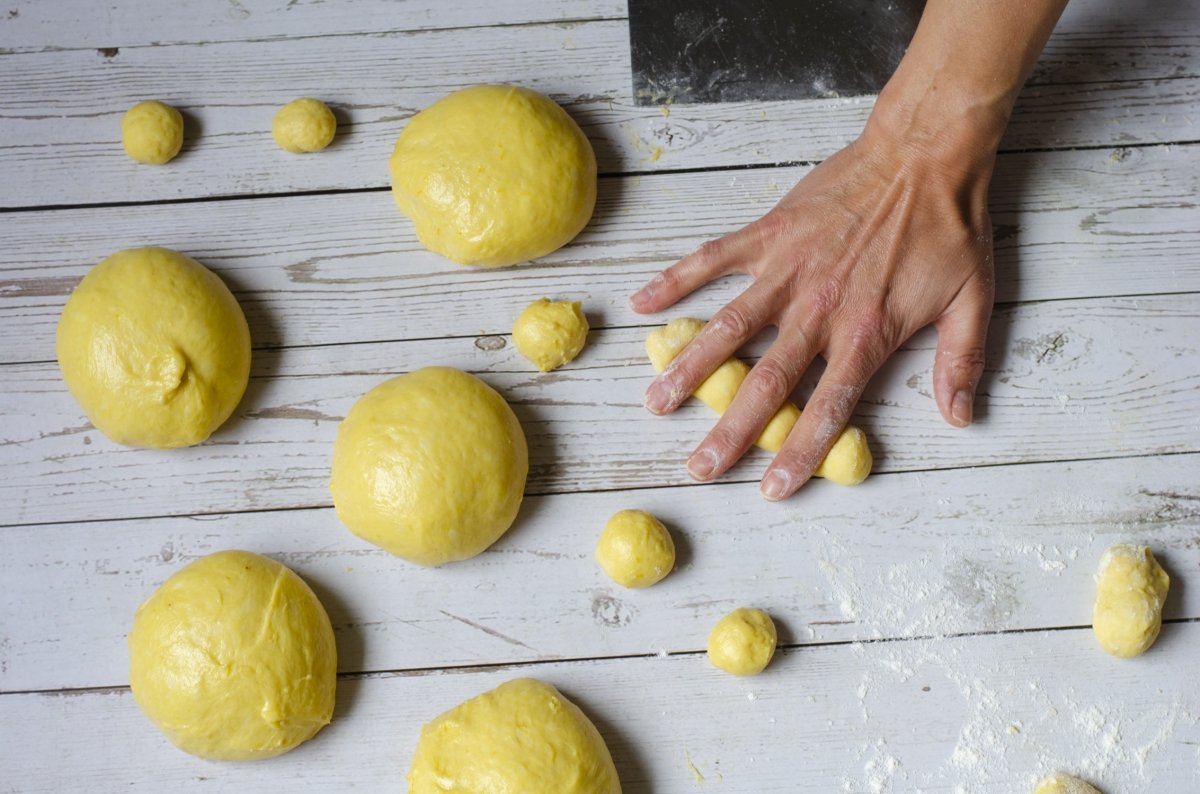
To form the bones, which will be placed on top of the bun in the shape of a cross, we roll each of the 12 portions of dough between slightly open fingers, so that there are small indentations in the dough. We place them on top of the bread and, in the center, where they intersect, we place the ball that will be the head.
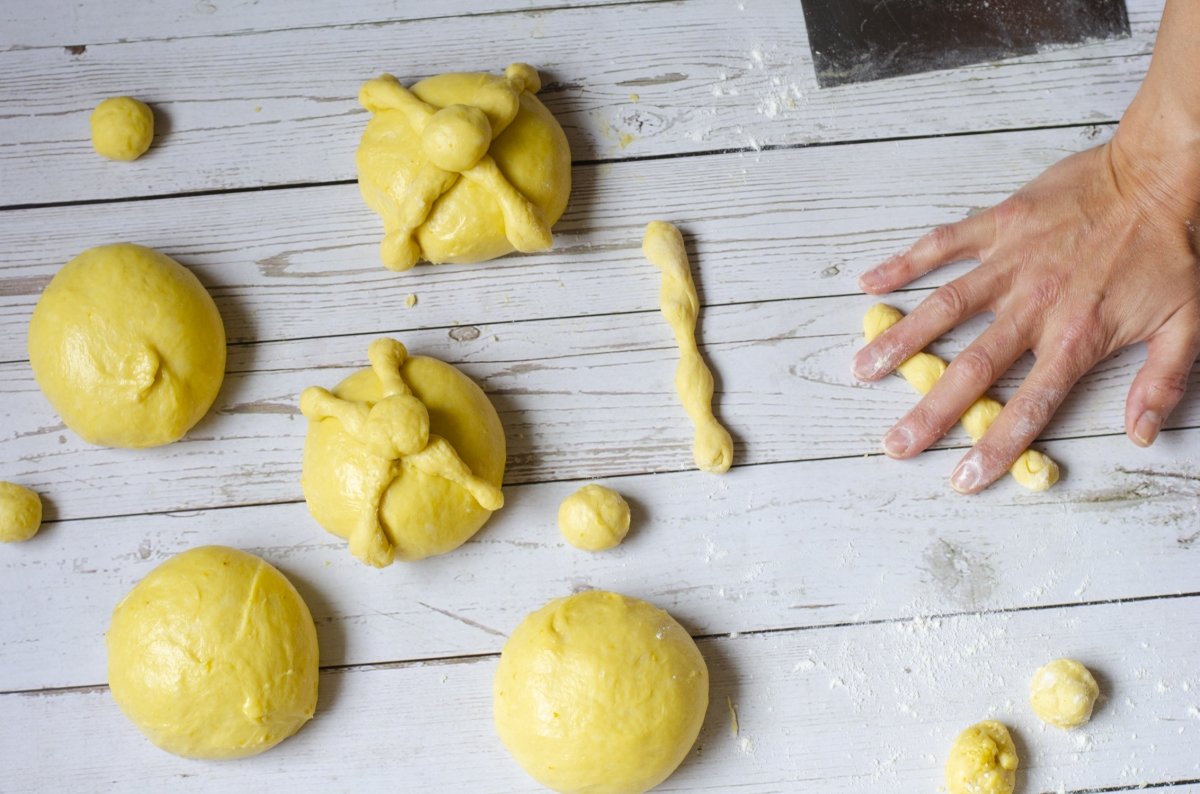
Once the loaves are formed, we place them on a baking tray, brush them with a little oil, cover them with film so that the surface does not dry out and let them rise until doubled in size, which will be 1 hour and a half.
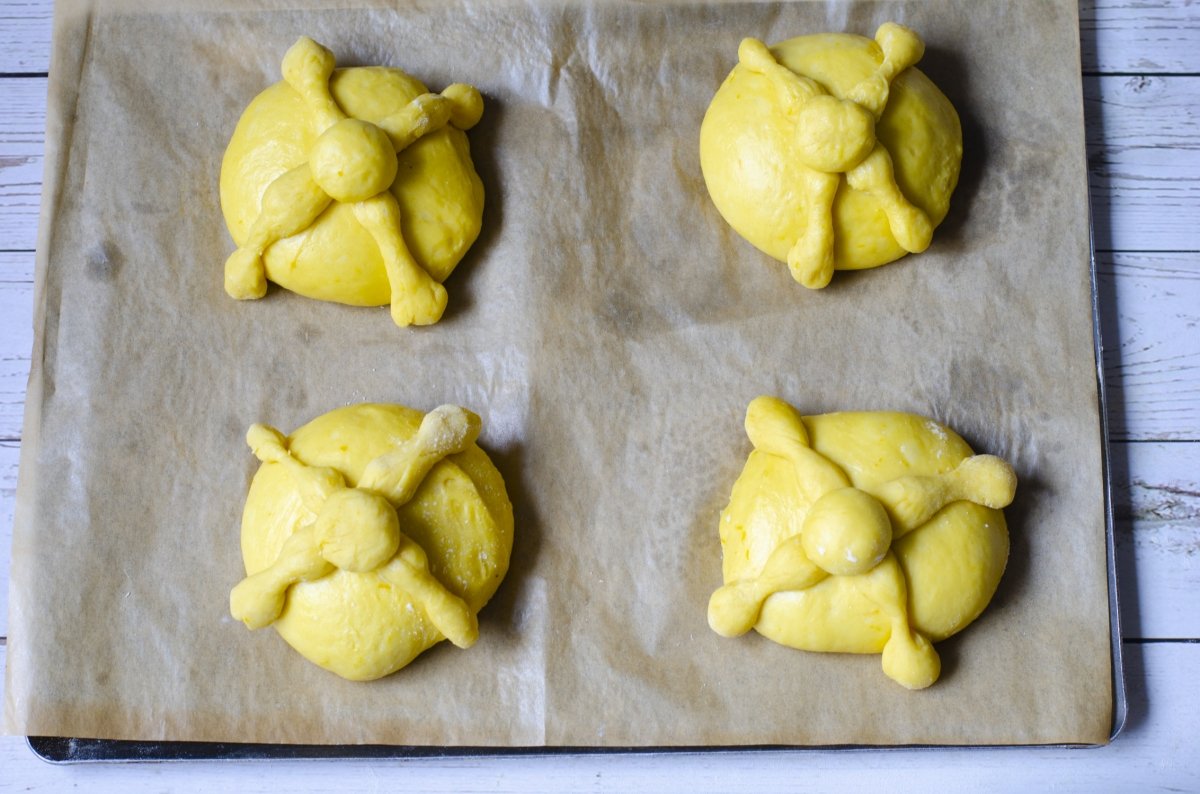
We turn on the oven at 180 °C and, when the loaves have doubled in volume and are ready to bake, we brush them with beaten egg and bake them for 20 or 25 minutes, depending a little on each oven. When we see that the loaves are golden and frosty, we remove them from the oven. We place them on a cooling rack and prepare the final glaze.
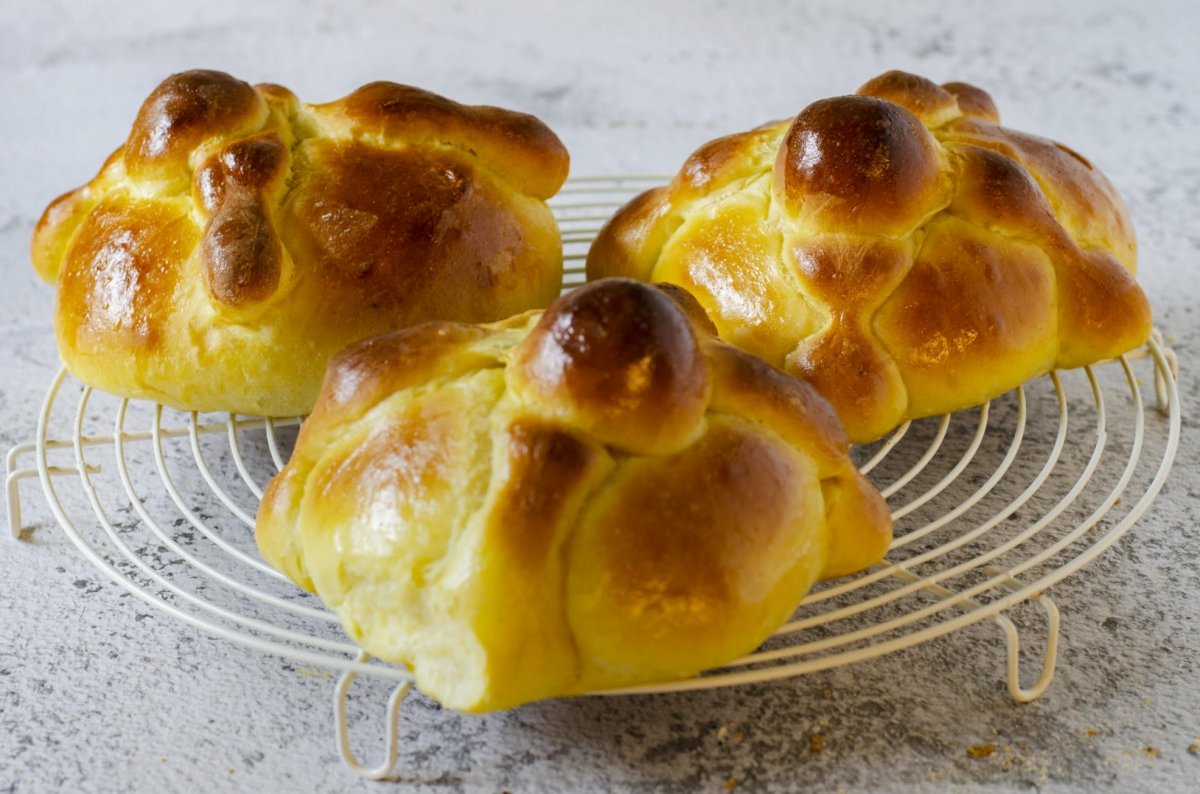
Melt the 20 g of butter and brush the pans de muerto with it. Next, we sprinkle abundant sugar, about 25 g, on top of the breads. This will remain attached to the crust and form a layer of sugar, which is the characteristic and traditional finish of pan de muerto.

We leave them completely and we already have our traditional breads of the dead for All Saints Day ready to distribute and taste.
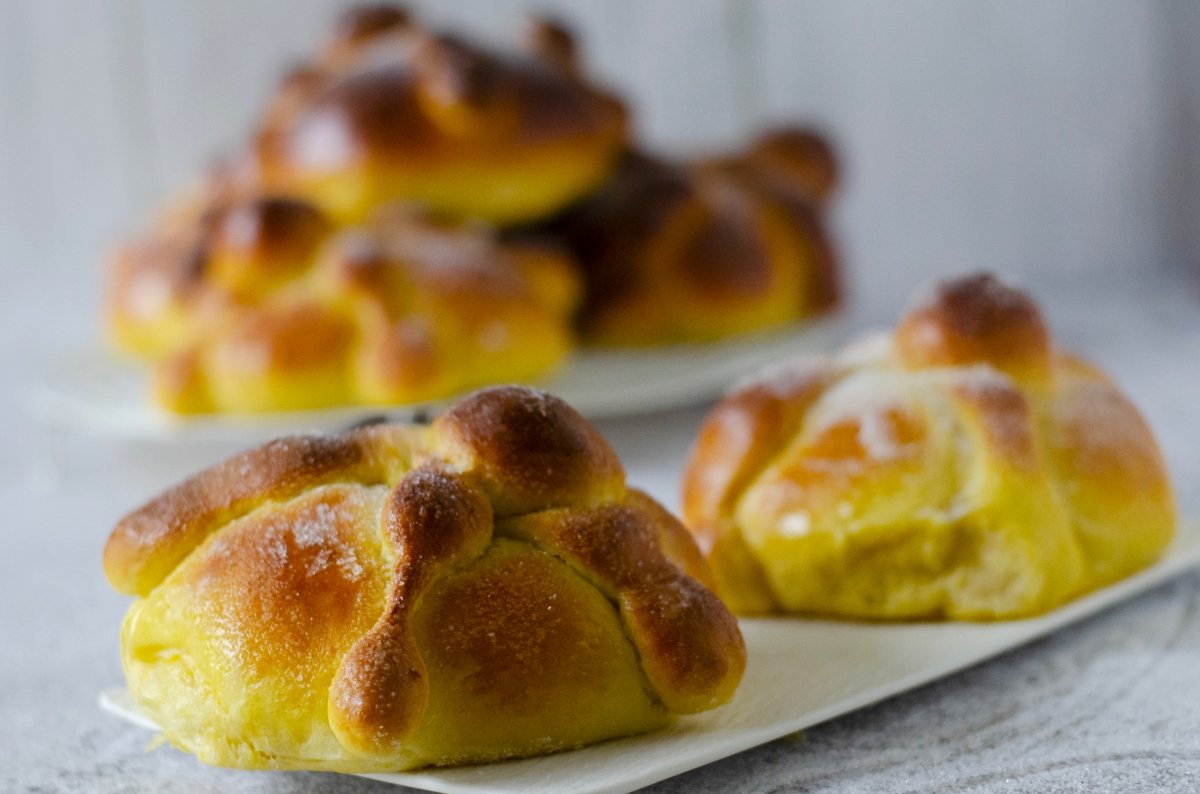
Easy preparation summary
-
- Mix the ingredients of the ferment and let it rest covered for 2 hours
-
- When the ferment is ready, we put the flour in a bowl and add the rest of the ingredients except the butter.
-
- Work the dough until it is smooth and everything is well integrated.
-
- Add the butter and work the dough until it is smooth and elastic again.
-
- Place the dough in a bowl and leave to rise, covered, until doubled in volume.
-
- Once it has risen, the dough is ready for forming the loaves.
-
- Divide the dough into 7 portions, round 6 (the loaves), and divide the rest into 12 parts. In turn, of these 12 parts we round 6 (the heads) and the remaining 6 we stretch and divide them to obtain 12 pieces (the bones).
-
- We roll the 12 pieces with our fingers to form the bones. We place 2 of these crossed pieces on each bread forming a cross and on them, one of the 6 little balls that form the heads
-
- Place the loaves in a bowl and let them rise until they double their volume.
-
- We turn on the oven at 180 °C. When the loaves are fully risen, brush them with egg and cook them for about 20 or 25 minutes and let them cool.
-
- Brush them with melted butter and sprinkle them with sugar.
-
- Let them cool down and taste them.















Welcome to Sweet Eats Cakes
Where delectable dreams come to life in the form of exquisite confections! Sweet Eats Cakes isn't just about taste; it's about turning moments into memories. Our cakes are crafted with precision, attention to detail, and a sprinkle of magic to ensure that each slice is not just a treat for the taste buds but a feast for the eyes!